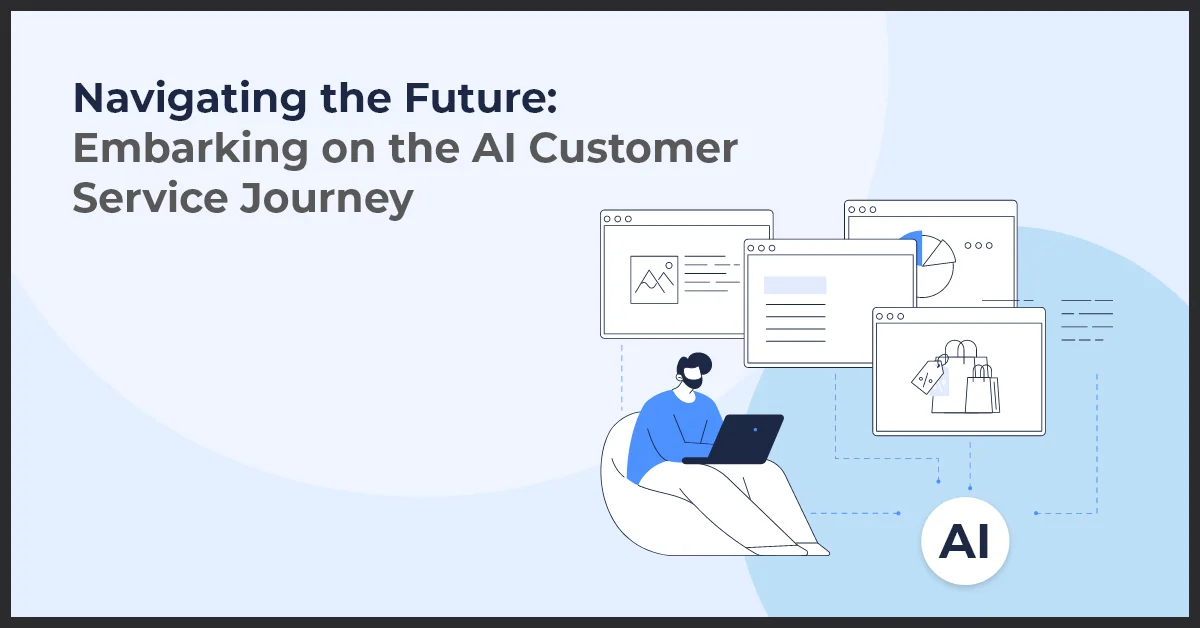The Ultimate Guide for Crafting Go-to-Market Strategy

Published on: May 3, 2022
Updated on: June 26, 2024
592 Views
- Digital Marketing
17 min read
Regardless of the business niche, entering any new market is always a big risk. When introducing a new product, the last thing you want to do is ;launch it without a proper go-to-market strategy.
It's impossible to know if you're chasing the wrong audience, entering a market too early or too late, or targeting a market that's too saturated with similar solutions without good preparation — and you don't want to waste time and money on an unsuccessful product launch.
When you are piled up with deadlines and all your resources are filled, a go-to-market strategy will guide you toward the right path. It works as a blessing in disguise, assisting you with fresh strategies to target the right audience and giving you a route to make the most of your brand efforts.
How Does a Go-to-Market Strategy Model Work?
To quote directly, a go-to-market strategy model is designed in a way to deliver and promote products and services to a target audience for increasing the customer base. The model also includes brand value and market communication among B2B and B2C prospects.
The GTM strategy aims to acquire the desired recognition, presence, and value in a specific region. Companies that are looking to expand their brand horizons such as brand awareness, conversions, or increased sales in new markets are in utmost need of a go-to-market strategy.
Understanding the Target Audience
Identifying and understanding the target audience is crucial for the success of any go-to-market (GTM) strategy. By knowing who your customers are and what they want, you can tailor your marketing efforts to effectively reach and engage them.
Importance of identifying and understanding the target audience
Identifying your target audience allows you to focus your efforts and resources on the people who are most likely to be interested in your product or service. By understanding their needs, preferences, and pain points, you can create messaging and offers that resonate with them and solve their problems.
Techniques for conducting market research and analysis to gather valuable insights
Market research and analysis is essential for obtaining valuable insights about your target audience. You can use techniques such as surveys, interviews, focus groups, and data analysis to gather information about their demographics, behaviors, motivations, and purchasing habits.
Developing buyer personas to better understand customer needs and preferences
Creating buyer personas is an effective way to visualize and understand your target audience. A buyer persona is a fictional representation of your ideal customer, incorporating their demographics, goals, challenges, and preferences. By developing detailed buyer personas, you can align your messaging and marketing initiatives with their specific needs and motivations.
Analyzing market trends and identifying opportunities and challenges
Staying up to date with market trends is vital for understanding your target audience's current and future needs. By analyzing market trends, you can identify opportunities for growth and potential challenges that may impact your GTM strategy. This information allows you to adapt your approach and stay ahead of the competition.
- Identify market trends: Monitor industry publications, news outlets, and social media channels to identify emerging trends.
- Analyze data: Use data analytics tools to analyze market data, customer behavior, and purchasing patterns.
- Stay informed: Attend industry conferences, workshops, and webinars to gain insights from experts and thought leaders.
Competitive Analysis
Understanding the competitive landscape is crucial in developing a successful go-to-market strategy. By conducting a comprehensive competitive analysis, businesses can gain valuable insights into their industry and competitors to stay ahead in the market.
Importance of conducting a comprehensive competitive analysis
A comprehensive competitive analysis allows businesses to identify their strengths, weaknesses, opportunities, and threats in comparison to their rivals. This analysis helps them understand the market dynamics, trends, and customer preferences.
Identifying key competitors and analyzing their strengths, weaknesses, opportunities, and threats
It is essential to identify the key competitors in the market and analyze their strengths, weaknesses, opportunities, and threats. This analysis helps businesses identify gaps in the market and areas where they can differentiate themselves from competitors.
Differentiating from competitors and highlighting unique selling points
Once businesses have identified their competitors, they can focus on differentiating themselves from them. By highlighting their unique selling points, businesses can attract and retain customers who value those specific offerings.
Strategies for monitoring and staying ahead of competition
Monitoring competitors and staying ahead in the market is crucial for long-term success. Businesses can use various strategies, such as regularly tracking competitor activities, monitoring industry trends, conducting market research, and adapting their strategies accordingly.
Go-to-Market Strategy Vs Marketing Strategy
Even though the end goal is similar, GTM and a marketing strategy are quite different. When we talk about go-to-market strategy, it is a one-time or a short-term approach used by marketers during a new product launch or at the time of entering a new market. On the other hand, a marketing strategy is the continuous effort to make a brand reach its potential, attract customers, and retain the competitive edge.
A marketing strategy is concerned with how a corporation may reach out to a certain market through time and deliver on its entire value proposition. The goal of a go-to-market strategy is to figure out how to get new products or services onto the market.
What Is a Successful Go-To-Market (GTM) Strategy?
A company looks for different ways to reach their market goals, increase business stability, or even empower their business. But when a company does so, it comes with unanticipated risks and difficulties. It is essential for your business to have a detailed, strategic, and customized layout.
Before you decide you get into a new market venture, make sure your business is ready for it. This means that if you are planning to take your business to an international market, every member of your organization must be on the same page.
You can ensure this by:
1. Defining Goals
Depending on your marketing goals, you need to ask yourself what is the reason behind this particular decision. For example, if you want to increase your digital landscape overseas, for that, you have to be explicit about your business objectives and make sure they can be accomplished.
2. Acknowledging Capabilities
Whether your goal is big or small, or you are already a well-established brand, it is important to consider your organizational footprint and internal business capabilities. You can check it by addressing what are your present requirements and what you might be needing in the foreseeable future.
3. Encouraging Informed Decision-Making
One of the crucial resources for any organization is informed decision-making. Any misalignment in this process can lead to a catastrophe, especially when you are entering a new market. Thus, in the go-to-market (GTM) strategy, you have to begin with proper analysis and work on constant modifications.
What Are the Important Components of a GTM Strategy?
A GTM strategy will be successful when you are well-accumulated with the three major components of this approach. Just like every marketing strategy you opt for, you start by thorough research before putting everything in order. The go-to-market (GTM) strategy unfolds piles of information in a succinct form.
1. Target Audience
You need to understand who is the right audience for your product. Who is going to buy your product? And how can your strategy help them address their problems? While you focus on the above questions, also try to work on the pain points that can arrive while crafting your GTM strategy. Furthermore, try to analyze the value your product will add to the lives of your prospects and are willing to pay the price you quote.
2. Competitive Edge
Staying ahead of your competition is an important part of running a business. Therefore, start analyzing your competition not only domestically but also overseas (if you plan to launch on an international level). Look for what strategies they are using and how well they are performing.
The market, most of the time, is oversaturated. So check whether there is a demand for your product or service. Furthermore, do not implement the same strategy for each product. This is a one-time strategy and it should be constantly changed based on the current market trends.
3. Distribution
Last and the most important is distribution. To meet this step, find out where and how you want to distribute your product. What customers do you want to target for marketing and distribution? More importantly, analyze how it can be achieved. Additionally, you have to search and understand the mediums you want to use to distribute your products. Based on those mediums, you need to create strategies that will target the right demographics and will extend your market reach.
How to Craft a Go-to-Market Strategy?
GTM strategy is an imperative tactic for your business, you don’t want to risk yourself towards its failure. Take time to think and build the strategy and accomplish the needed goals.
1. Understanding the Buyer’s Persona
You might think of it as a stereotype, but this is one thing that each organization regardless of the niche has to focus on. The first thing to do while preparing your product or service to launch in the market is to consider your customers.
Adding to this, a report from Gartner states that for any B2B company it is essential to have at least 6 to 10 decision-makers. Though this might take you to a complicated selection setup, it will indeed help in forming the right decision that will attract the right audience and help you with your new marketing objective.
2. Evaluating Growth Opportunities
Organizations need to communicate business objectives to easily engage with the prospects and augment the business. Once a company has a clear understanding of its business goals and all the quantifiable objectives are aligned, it becomes easy to analyze the customer decision journey.
Customer journey plays an integral role in crafting strategies for a GTM strategy. When a company can understand how a customer thinks and what their approach is before buying a product, it becomes easy for them to craft a strategy for driving engagement and generating conversions.
3. Integrating the Right Tools
You cannot meet your business and marketing goals without incorporating the right tools. For each GTM strategy, you need digital marketing tools. Leveraging tools like social media, SEO, content marketing, display ads, and so on will help you to start constructively on the digital footprint.
Integrating such marketing tools into your strategy will effectively help you to hit your goal and meet your business objective. Adding to this will help you to significantly increase brand awareness and reach the target audience in a short span of time.
4. Targeting Inbound Leads
As compared to outbound leads, you can easily target and convert your inbound leads. They are not only easy to acquire but are also inexpensive. Inbound leads are already familiar with your business proposition and are generally more aligned to buy your product.
You need to invest in efforts and tools like content creation, social media, and search engine optimization to engage with the inbound leads and try to convince them to buy.
5. Working on User Experience
Marketers have escalated towards advanced marketing strategies, which involve assisting companies to provide the best brand experience. Whether it is for a particular market or all distribution channels, brand experience is the one thing that remains on the top of a marketer’s mind today.
Properly planning and optimizing the brand’s value will help in achieving massive growth. User experience plays a huge role in making or breaking your brand. If your users are impressed with not only your products but the whole journey from choosing to purchasing a product, it will add good value to your brand, leading to positive word-of-mouth.
Value Proposition Development
In order to effectively go to market with a product or service, it is crucial to have a well-defined and compelling value proposition. This involves clearly articulating the unique value and benefits that the offering provides to customers.
Defining and refining the value proposition of the product or service
The first step in value proposition development is to clearly define what sets the product or service apart from competitors. This involves identifying the unique features, capabilities, and benefits that customers will gain by choosing the offering.
Identifying key benefits and value drivers for customers
Next, it is important to understand the specific benefits and value drivers that will resonate with the target audience. This involves conducting market research and customer insights to uncover the pain points, goals, and desires of potential customers.
Communicating the unique value proposition effectively to the target audience
Once the value proposition has been defined and the key benefits have been identified, it is crucial to communicate this effectively to the target audience. This involves crafting clear and compelling messaging that emphasizes the unique value that the offering provides.
Tools and techniques for developing a compelling value proposition
There are various tools and techniques that can be used to develop a compelling value proposition. These include customer surveys, interviews, focus groups, and competitive analysis. By leveraging these tools, businesses can gain valuable insights and refine their value proposition to resonate with their target audience.
Pricing and Positioning
In order for a Go-to-Market (GTM) strategy to be successful, it is important to have effective pricing and positioning strategies in place.
Importance of effective pricing and positioning strategies in GTM
Pricing and positioning play a crucial role in the success of a product or service. They determine how a product is perceived by the target audience and can greatly impact sales and profitability. Effective strategies can help differentiate a product or service from competitors and attract the attention of potential customers.
Determining optimal pricing based on market dynamics, costs, and customer perceived value
When determining pricing for a product or service, it is important to consider market dynamics, such as competitor pricing and customer demand. Additionally, costs associated with production, distribution, and marketing should be taken into account. It is also essential to consider the perceived value of the product or service to the customer in order to set a price that reflects its worth.
Positioning the product or service in a way that resonates with the target audience
The positioning of a product or service is how it is positioned in the minds of the target audience. It is important to understand the needs, preferences, and motivations of the target audience in order to position the product or service in a way that resonates with them. This can be achieved through clear and compelling messaging that highlights the unique value the product or service brings.
Evaluating pricing and positioning strategies of competitors
In order to stay competitive, it is important to regularly evaluate the pricing and positioning strategies of competitors. This can provide insights into market trends, pricing benchmarks, and potential opportunities for differentiation. By understanding the strategies of competitors, adjustments can be made to stay relevant and appealing to the target audience.
Distribution and Supply Chain Management
Evaluating the distribution and supply chain requirements of the product or service
Identifying the optimal distribution model and partners
Streamlining the supply chain to ensure efficient delivery of the product or service
Managing inventory, logistics, and fulfillment processes effectively
Branding and Messaging
Developing a strong brand identity that aligns with the Go-to-Market (GTM) Strategy:
- Identify key brand attributes that reflect the GTM strategy
- Create a brand voice that aligns with the target audience
- Design a visually appealing logo and brand elements
- Ensure consistency in brand messaging across all touchpoints
Crafting compelling messaging that resonates with the target audience:
- Conduct market research to understand the audience's pain points and motivations
- Create customized messaging that addresses their needs and desires
- Use persuasive language and storytelling techniques to engage and inspire
Creating brand guidelines to ensure consistency across all marketing channels:
- Define brand colors, fonts, and visual elements
- Specify tone of voice and style of communication
- Provide clear guidelines for logo usage and design standards
Leveraging branding and messaging to build trust and credibility:
- Establish a consistent brand presence across all marketing channels
- Use customer testimonials and case studies to demonstrate success
- Showcase industry awards and recognition
- Highlight partnerships and affiliations
Product Launch and Commercialization Strategies
Launching a new product or feature in the market requires careful planning and execution. It is essential to have a strong go-to-market strategy in place to ensure its success. Here are some strategies that can help you achieve a successful product launch:
Preparing the Market for the Product Launch through Effective Communication
Prior to the launch, it is crucial to build anticipation and excitement among your target audience. This can be done through effective communication channels such as social media, blog posts, and email newsletters. Engage with your audience, highlighting the key features and benefits of your product or feature.
Creating buzz around your launch can help generate early adopters and advocates for your product. Leverage influencers or industry experts to endorse your product and spread the word. Craft compelling messaging that resonates with your target audience and addresses their pain points.
Developing Go-to-Market Plans for New Products or Features
A well-defined go-to-market plan is crucial for the successful launch and commercialization of your product. This plan should outline the marketing and sales strategies, target audience, pricing and positioning, distribution channels, and messaging.
Identify the key stakeholders and decision-makers involved in the buying process and tailor your strategies accordingly. Determine the most effective marketing channels and allocate resources accordingly. Conduct market research to understand the competition and consumer preferences, and develop a value proposition that differentiates your product from others in the market.
Creating a Roadmap for Ongoing Commercialization Efforts
The product launch is just the first step towards commercialization. It is essential to have a roadmap that outlines your ongoing marketing and sales efforts. This includes strategies for scaling your product, expanding into new markets, and driving customer adoption and retention.
Monitor key performance indicators (KPIs) such as sales revenue, customer acquisition costs, and customer satisfaction to track the success of your commercialization efforts. Continuously refine your strategies based on data-driven insights to maximize the long-term success of your product in the market.
Conclusion
In conclusion, a well-executed go-to-market strategy is essential for the success of any product or service. This detailed content plan covers the key aspects of developing a strong GTM strategy, including target audience analysis, competitive analysis, value proposition development, pricing and positioning, marketing and sales channels, distribution and supply chain management, branding and messaging, sales and marketing campaign planning, and product launch strategies.
Attracting your target audience is an art, and with an effective GTM strategy this task can be easily accomplished. Moreover, a strategic plan when implemented correctly for a product launch or entering a new market will make you stand out from your competition.
Samsung, Apple, and Nike amongst other brands use a go-to-market strategy to keep their audience excited even before the product launch. During the designing of the product, it is imperative for companies to create a competent GTM strategy and modify it as per the market conditions.Carefully implementing the above-mentioned methodologies in your go-to-market approach will provide you with better opportunities to succeed.
Need help building an optimal GTM strategy for your business? At Growth Natives, we have a team of expert marketers who will help you boost your go-to-market leads in no time!
Frequently Asked Questions
The five go-to-market strategies are direct sales, channel sales, freemium, self-service, and enterprise sales.
To create a GTM strategy, start by defining your target market, understanding customer needs, setting clear objectives, developing a value proposition, and selecting the right channels and tactics.
The four components of a go-to-market strategy are market analysis, target customer identification, marketing mix development, and sales strategy.
The GTM strategy is typically owned by a cross-functional team that includes representatives from sales, marketing, product management, and sometimes finance.



